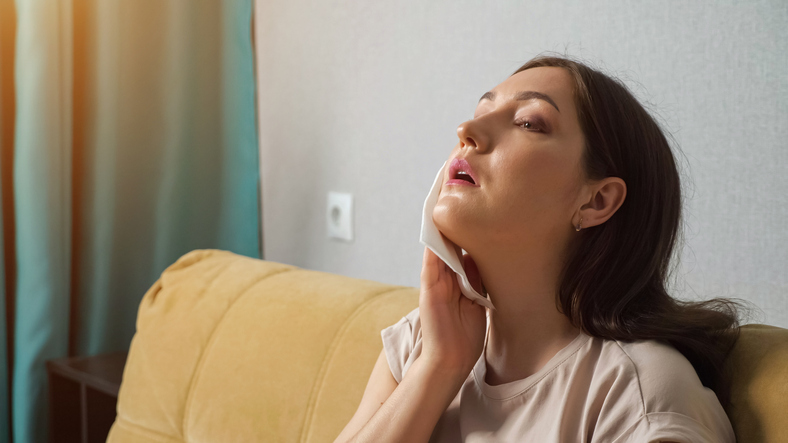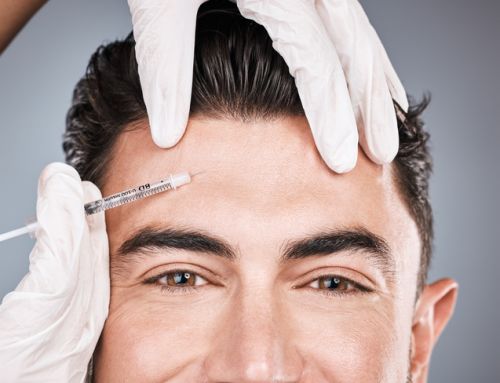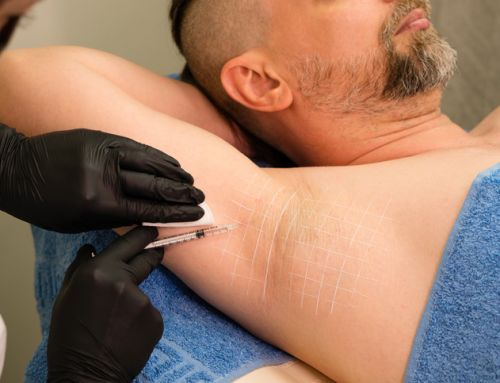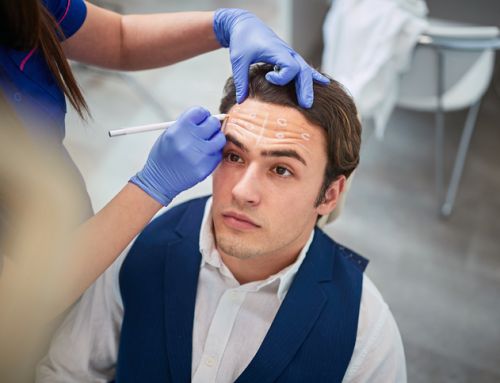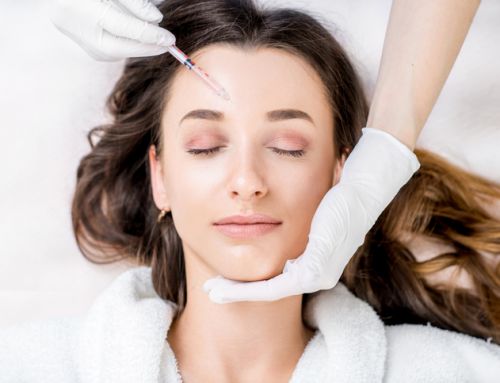Excessive head sweating can be annoying and discouraging. Your capacity to work, perform tasks or engage in close relationships with others may be impacted. You might start sweating just from thinking about a stressful situation.If you frequently perspire from your head or face for no apparent reason, you might have craniofacial hyperhidrosis. Botox for face sweating would be an effective method of treating craniofacial hyperhidrosis. It is basically Botox injections, which are used to treat wrinkles.
Factors causing craniofacial hyperhidrosis
Craniofacial hyperhidrosis is classified into two types. If primary focal hyperhidrosis is the diagnosis, there may be no known cause for your condition. The hands, feet, head and underarm sweat are the most frequently affected areas of primary hyperhidrosis. Primary hyperhidrosis is usually the cause of excessive facial sweating.
If hyperhidrosis is hereditary in the family, a person may likely suffer from excessive sweating. Primary focal hyperhidrosis symptoms typically begin in childhood before a person reaches the age of 25 years.
Secondary hyperhidrosis may indicate that specific illnesses or hormonal disorders are to be blamed for excessive sweating. Sweat glands may become overactive due to hyperthyroidism, diabetes, pregnancy, infections, heart attack, nervous system disorders, low blood sugar, obesity or menopause among other conditions. Your medications or supplements may be the most common cause. Under conditions of stress or anxiety, facial sweating can get worse.
Botox treatment for craniofacial hyperhidrosis
Everyone has probably heard of Botox cosmetics by this point. This injectable has gained a ton of popularity over time because it is an excellent cosmetic treatment option for eradicating frown lines and forehead wrinkles.
So, does Botox help facial sweating, too? Yes. Botox cosmetic injections’ ability to relax facial muscles is what makes them effective as an anti-wrinkle treatment.
Botox, also known as botulinum toxin, is a powerful substance that is derived from the Clostridium botulinum bacteria. It is used to smooth out the appearance of facial folds and creases by weakening or relaxing the facial muscles to limit muscle contraction. When Botox is used to treat hyperhidrosis or excessive sweating, the same mechanism described above for facial Botox applies.
Although it is regarded as off-label, the use of Botox for craniofacial hyperhidrosis, which is excessive sweating on the face and forehead is a safe and efficient treatment when done by a skilled Botox practitioner.
Botox is used to treat craniofacial hyperhidrosis by preventing the chemical that triggers to activate sweat glands. The International Hyperhidrosis Society claims that patients who receive Botox injections can experience a reduction in excessive sweating by up to 87%. After receiving treatment, noticeable results can be seen within four days, and they can last for at least six months. You may resume your regular activities right away after an approximately 15-minute outpatient procedure for these injections. Following the initial procedure, additional injections might be required in the first year.
How Botox for forehead sweating is performed?
Only a certified doctor or licensed dermatologist should administer Botox to stop sweating on face. This is because botulinum toxin injections can lose their effectiveness if they are injected too superficially or too deeply into the muscles. Injecting Botox on the forehead requires a high level of skill and precision.
The average total dose needed for a standard Botox treatment to stop forehead perspiration is 100 Botox units. To reduce the chance of eyebrow drooping, at least two to three units of Botox is injected into each injection site using tiny needles while carefully avoiding the brow area.
The procedure is quick and usually performed as an outpatient treatment. Patients can resume their regular activities after the injection procedure is complete.
Following the treatment, you may experience common short-term side effects like headache, bruising and swelling in the injected area. It is uncommon for a patient to experience post-treatment complications especially when they are treated with injections properly and in small doses.
For Botox treatments to show their results entirely, a patient might need to wait for a span of at least seven to 14 days. A patient can start noticing a decrease in sweating within two to five days of the treatment. Further, in two weeks, the forehead and facial skin will be completely dry.
Botox significantly enhances the quality of life for people with craniofacial hyperhidrosis. Over five months on average, it reduces forehead sweating by at least 75%. It is advised to follow up regularly with your Botox professional to determine whether you require additional injections to maintain dryness.
Where to find the best Botox for face sweating?
Before it worsens and starts to affect your quality of life and confidence, get Botox for face sweating. Skin Deep NYC Med Spa emphasizes micro treatments to give you a refreshing look. Our skilled doctors and Botox practitioners ensure that you receive the best injection treatments, so you won’t have to worry about your day. If you’re searching for the “best Botox for sweating near me,” get in touch with Skin Deep NYC Med Spa, now!
